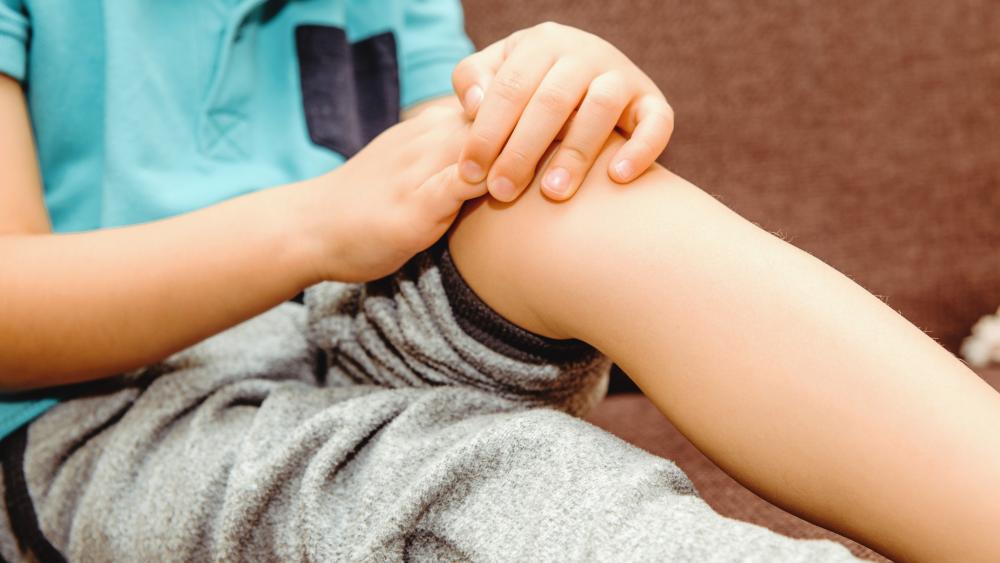
Key facts
- Juvenile idiopathic arthritis (JIA, or juvenile arthritis) is chronic (ongoing) inflammatory arthritis that affects children.
- There are several different types of JIA, which have different symptoms and signs.
- Common symptoms include joint pain, swelling and stiffness in the morning.
- Treatments are available and depend on the type of arthritis.
- About half of all children with JIA no longer have symptoms by the time they are adults.
What is juvenile idiopathic arthritis?
Juvenile idiopathic arthritis (JIA) is inflammatory arthritis that affects children under 16 years old.
JIA can be mild or severe and may last for months or years. It must last for at least 6 weeks to be JIA. About half of all children ‘grow out of it’ by the time they are adults.
Why is it called juvenile idiopathic arthritis?
- ‘Juvenile’ refers to children under 16 years old.
- ‘Idiopathic’ means the cause is not known.
- ‘Arthritis’ is inflammation of your joints that causes symptoms such as pain, swelling, and stiffness.
It can be called simply ‘juvenile arthritis’.
What are the types of juvenile idiopathic arthritis?
There are several different types of juvenile arthritis.
- Oligoarthritis — is the most common type of JIA. It usually begins at 2 to 4 years of age. It affects up to 4 joints in the first 6 months, usually large joints like the knees and ankles.
- Polyarthritis — develops in children 1 to 12 years of age. It affects 5 or more joints in the first 6 months. The same joints on each side of the body are often affected, including fingers, toes, wrists, ankles, hips and knees.
- Systemic arthritis — as well as affecting the joints, this also causes widespread inflammation. Symptoms can include fever, rash, swollen glands, fatigue and aching limbs. It used to be called Still’s disease.
- Enthesitis-related arthritis — often affects older children and teenagers. It affects the points where bones meet tendons. It most commonly affects the heels, hips and knees.
- Psoriatic arthritis — affects the skin as well as joints, causing a scaly rash called psoriasis.
What are the symptoms of juvenile idiopathic arthritis?
The symptoms of juvenile idiopathic arthritis can change over time. When symptoms are worse, this is called a ‘flare-up’.
Common symptoms include:
- swelling, pain and stiffness in one or more joints for at least 6 weeks
- the skin over the joints being red and warm to the touch
The joints that are most often affected are the knees, hips, hands and feet. Joint stiffness is usually worse in the mornings.
Less common symptoms are:
- fever
- feeling very tired
- skin rash
- loss of appetite or weight
- inflammation of the eyes (uveitis) and sometimes of other organs in the body
JIA is a chronic childhood arthritis, meaning that it lasts at least 6 weeks, and can continue for months or years.
What causes juvenile arthritis?
The exact cause of JIA is not fully known. But it is known to be an autoimmune condition — meaning that your immune system is involved.
When should I take my child to see a doctor?
If you think your child may have arthritis, you should take them to a doctor.
It’s important that children with arthritis are diagnosed as early as possible so they can get treatment to try to prevent any long-term joint damage or disability.
How is juvenile arthritis diagnosed?
Your doctor will ask about your child’s symptoms and their health in general. They will examine them, including any joints that have been causing pain, swelling or stiffness.
Your doctor may recommend some tests, such as:
- blood tests
- x-rays and other scans
Your doctor may refer your child to a doctor who specialises in diagnosing and treating juvenile arthritis, called a paediatric rheumatologist.
How is juvenile arthritis treated?
Children with juvenile arthritis are usually treated by a team of health professionals. This may include:
- doctors (your child’s family doctor, rheumatologist or any other relevant specialists)
- nurses
- physiotherapists
- occupational therapists
- podiatrists
- psychologists
There are several treatments for JIA, aimed at reducing inflammation and damage to your child’s joints. This helps to control their pain and improve mobility, so that your child can participate in their usual activities.
Medicines
Medicines for JIA include pain-relief medicines, such as paracetamol.
Medicines that can be used to treat JIA by reducing inflammation include:
- non-steroidal anti-inflammatory drugs (NSAIDs)
- corticosteroid injections
- disease-modifying anti-rhematic drugs (DMARDs)
Physical treatments
Physical treatments for JIA can include:
- exercises to help keep your joints moving well
- splints to help with the support or use of a joint
- treatments for joint pain
Can juvenile arthritis be prevented?
There is no known way to prevent JIA.
Complications of juvenile arthritis
A type of inflammation of the eyes called uveitis can affect children with JIA. This condition can lead to loss of vision. Regular eye tests are needed to check for this complication.
Joint damage can happen if the inflammation is not well controlled.


